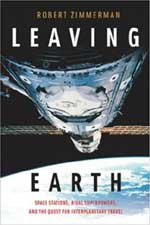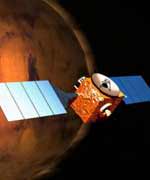
The Soviet Union began by vouching for human habitation once they had lost the race to the moon. Patsayev, Dobrovolsky and Volkov occupied the first Salyut which was the first manned orbital space station. During their three weeks in this small metal tube like craft they kept busy with adapting to a climate and facility created by ground-based designers who had no real appreciation of weightlessness. These cosmonauts succeeded in performing nonetheless with one highlight being the growth of many plants from a variety of seeds. By sticking to a rigid and very busy schedule of work, exercise and maintenance, they added significant insight into living in space for long durations. Sadly though this didn’t come freely for the Soviet Union as the cosmonauts tragically died while descending in their re-entry capsule.
Skylab was the USA’s response to Salyut. This behemoth, launched via the last Saturn V rocket system, provided over 12700 cubic feet of living space. This was a veritable mansion as compared to the Soviet Union’s Salyut. Here Conrad, Kerwin and Weitz completed a four week tour that was as much for repair and reconstruction as it was for scientific experiments. In a ‘we can fix anything’ mentality, they unstuck a solar panel, unpacked equipment and set up experiments. Surprisingly, they experienced no space sickness, just like the first Soviets, though this turned out
to be very rare.
In Salyut 4 Grechko and Gubarev, had brought seeds, amoebas, tadpoles, fish and flies to share their living quarters in Salyut 4. After 30 days of scientific experiments, observation and maintenance activity, they successfully returned to Earth. This was the Soviet Union’s first success in manned station return. With Salyut 6 the Soviet Union launched over eighteen different manned missions during its almost five years of operation. Residents stayed for over six months with a complement, at times, of up to four people. The Salyut 7 and Mir missions built upon the Soviet Union’s successes. Space flight durations were extended. Equipment was better designed, while experiments provided more insight on how the human body reacts to extended times in space. The cosmonauts learned to focus and control their emotions to stay mentally and emotionally fit in such an unnatural situation. They could repair aged or broken equipment, recover from unexpected failures and add significant structural components. This time saw amazing progress but the end of the Soviet Union also spelt the end for Salyut’s and Mir’s roles of being stars for communism.
Nevertheless, political expediency still is keeping the space program alive. Russia deorbited Mir to save money. They then joined with the USA and other nations to pursue construction of the International Space Station (ISS). Though Russia was able to impart some of their hard earned knowledge the USA considered the contribution to be more a form of economic relief for the newly recreated state. From this it appears the political climates have almost changed places as the Russian space program, by necessity, is relying on capitalism for its very survival while the NASA bureaucracy appears to be more interested in keeping itself alive than in advancing the space program. Yet the ISS is in space and is contributing to our knowledge.
Though this book contains many of the technical issues of the designs of space stations as well as the sordid details of politics, its greatest provision is the human experiences that so richly embellish the story. You read of cosmonauts that try farming plants throughout the interior of their craft in efforts to yield a worthwhile harvest. There is a female fighter pilot/cosmonaut that ended up wearing a dress and being a hostess in space. Innumerable misses of docking craft demonstrate the riskiness of the whole affair. As well, the complete dependency on temperamental machinery constantly kept stark terror a scant distance away. Most of all though, the reader can see the triumph of human ingenuity and community where coming together is not just a convenience but a necessity.
There are many people who believe that Mars is the next step for the human race. Robert Zimmerman shares in the belief and in his book Leaving Earth he shows how the previous thirty years have given humankind an incredible wealth of knowledge on how to do this. Within it are many excellent descriptions of good designs and bad designs, heroic actions to save a mission and errors in judgement that nearly doom them. Yet the message comes through again and again, if we want to go to Mars we have shown we have the ability, we only need the will.
To read more reviews, or order the book online, visit Amazon.com.
Review by Mark Mortimer

